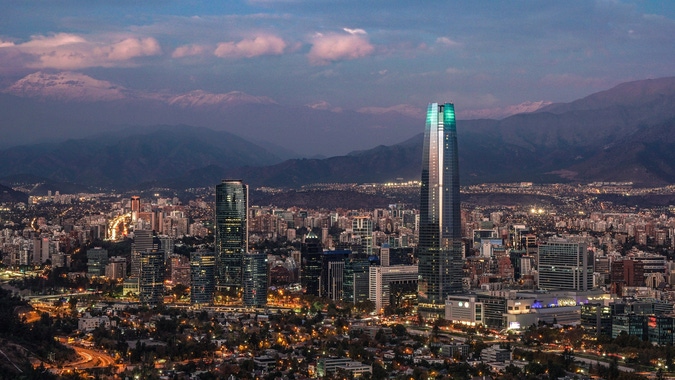This article was translated from our Spanish edition using AI technologies. Errors may exist due to this process.
Chile faces an increasingly critical situation: water scarcity . The drought in the region is now in its thirteenth year and the government is forced to take extreme measures. For the first time in its history, the Andean country will implement a plan to ration water in Santiago, the capital, where more than six million people live.

James Strachan | Getty Images
This Monday Claudio Orrego , governor of the Metropolitan Region, announced the plan with which Santiago intends to face the crisis: “The main environmental challenge of the Metropolitan Region, for the coming years, is to supply enough water for human consumption , which is the priority, but also for agricultural, industrial and public space activities. We can’t make it rain, but we can prepare for an extreme situation.”
The plan has four alert stages (green, orange, yellow and red) and is based on the level of water in the Mapocho and Maipo rivers, the city’s two main water sources. The number and duration of outages in the city will depend on the alert level applicable to each day. The document explains that the water will start to be rationed, but if necessary it will be completely cut off in stages in the different areas of the city. The maximum duration of the cuts will be 24 hours and they will be every four, six and twelve days, depending on the water deficit to be covered.
At a press conference, Eugenio Rodríguez , client director of Aguas Andinas , the company that manages the supply of drinking water and sewerage in Santiago, explained: “It is necessary to have protocols, because the risk is evident. The rivers bring water to the limit, with its flow at a minimum, and we have to be prepared and coordinated with the authority… We join the urgent call to adapt to this climate change, both from the protocols, from the investments that are possible perform, as well as the adaptation that we all have to do in our homes”.
It’s not just Santiago: climate change and urbanization are two of the factors that exacerbate water scarcity in the world’s big cities. Accordingto the United Nations Organization , about 1.2 billion people live in areas of water scarcity, while 500 million are close to that situation. In Mexico, the city of Monterrey was forced to implement cuts by regions in order to deal with the current water crisis.
Exclusive: Tom Brady Appoints Lowe’s Executive as the New CEO of His Wellness Company TB12
The Richest Person on Earth Breaks Every Rule, and You Should Too
Food Network Star Geoffrey Zakarian Distills the Entire Hospitality Industry Down Into Just 48 Words
Overcome the 5 Common Obstacles Keeping You From Full-Time Entrepreneurship
How This First-Generation American Founder Is Taking on Fast-Food Giants
Want to Improve Your Creativity and Focus? Try Eating Chocolate for Breakfast
How the Creator of Dugout Mugs Hit a $30 Million Home Run With a Business He Started in His Apartment